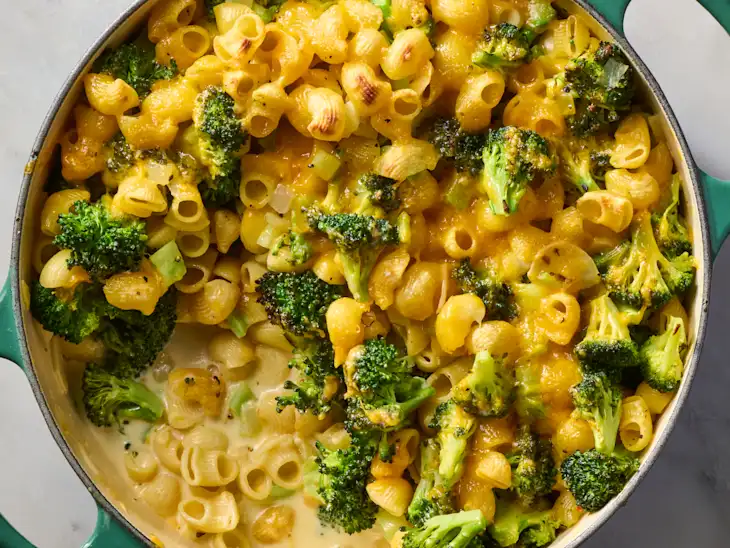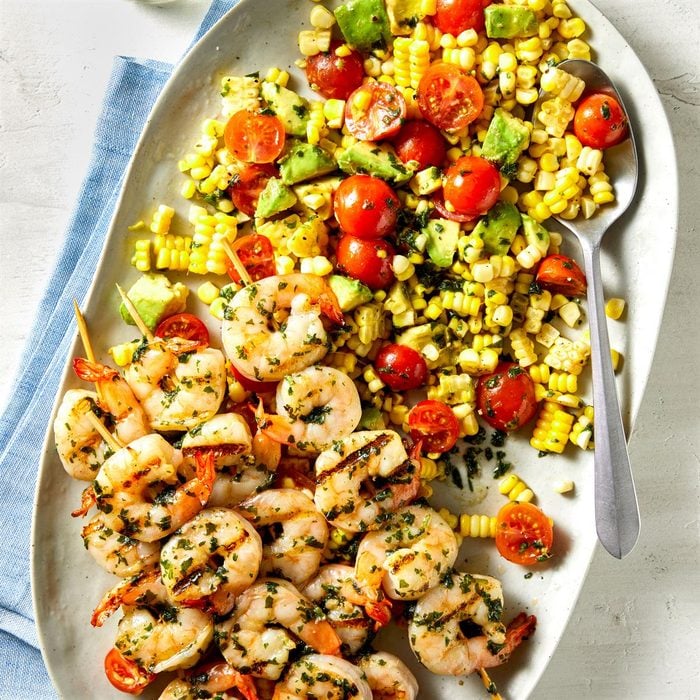There’s nothing quite like the satisfaction of growing your own ingredients and turning them into mouthwatering dishes. At Taste Trove, we believe that cultivating a home garden and cooking with its bounty is a rewarding way to connect with food. Whether you’re a seasoned gardener or just starting with a few pots on your balcony, growing your own produce can elevate your cooking with fresh, vibrant flavors. This article features ten delicious recipes designed to inspire you to grow your own ingredients at home, complete with tips for gardening success and links to further resources on our site and beyond.
Why Grow Your Own Ingredients?
Growing your own food offers numerous benefits: fresher flavors, cost savings, and the joy of sustainable living. Homegrown ingredients like tomatoes, herbs, and greens are packed with nutrients and taste far superior to store-bought alternatives. Plus, gardening is a fun, family-friendly activity that can supply your kitchen year-round. Below, we share ten recipes that highlight ingredients you can easily grow, along with gardening tips to ensure a bountiful harvest.
1. Fresh Basil Pesto Pasta
Ingredients (Serves 4):
- 2 cups fresh basil leaves (homegrown)
- ½ cup pine nuts
- ½ cup Parmesan cheese, grated
- 2 cloves garlic (homegrown)
- ½ cup extra-virgin olive oil
- 12 oz pasta (spaghetti or penne)
- Salt and pepper to taste
Instructions:
- In a food processor, blend basil, pine nuts, Parmesan, and garlic until finely chopped.
- Slowly add olive oil while blending until smooth. Season with salt and pepper.
- Cook pasta according to package instructions. Drain and toss with pesto.
- Serve with extra Parmesan and a sprinkle of fresh basil.
Gardening Tip: Basil thrives in warm, sunny spots. Pinch off flower buds to encourage leaf growth. Learn more in our Guide to Growing Herbs.
External Link: Explore basil varieties at The Old Farmer’s Almanac.
2. Roasted Cherry Tomato Soup
Ingredients (Serves 4):
- 2 lbs cherry tomatoes (homegrown)
- 1 onion, diced
- 3 cloves garlic (homegrown)
- 3 tbsp olive oil
- 4 cups vegetable broth
- ¼ cup fresh thyme (homegrown)
- ½ cup heavy cream (optional)
- Salt and pepper to taste
Instructions:
- Preheat oven to 400°F (200°C). Toss tomatoes, onion, and garlic with olive oil, salt, and pepper on a baking sheet.
- Roast for 25-30 minutes until tomatoes are soft and caramelized.
- Transfer to a pot, add broth and thyme, and simmer for 10 minutes.
- Blend until smooth. Stir in cream, if using, and adjust seasoning.
- Serve with crusty bread.
Gardening Tip: Cherry tomatoes are perfect for small gardens or containers. Use stakes or cages to support vines. Check out our Tomato Growing Tips.
External Link: Learn about tomato care at Gardening Know How.

3. Spinach and Feta Stuffed Mushrooms
Ingredients (Serves 4):
- 12 large cremini mushrooms, stems removed
- 2 cups spinach (homegrown), chopped
- ½ cup feta cheese, crumbled
- 1 clove garlic (homegrown), minced
- 2 tbsp olive oil
- ¼ cup breadcrumbs
- Salt and pepper to taste
Instructions:
- Preheat oven to 375°F (190°C). Brush mushroom caps with olive oil and place on a baking sheet.
- Sauté spinach and garlic in olive oil until wilted. Mix with feta, breadcrumbs, salt, and pepper.
- Stuff mushroom caps with the mixture.
- Bake for 15-20 minutes until mushrooms are tender and topping is golden.
- Serve as an appetizer or side.
Gardening Tip: Spinach grows well in cool weather and partial shade. Harvest outer leaves to encourage regrowth. See our Guide to Leafy Greens.
External Link: Discover spinach varieties at Burpee.
4. Cucumber and Mint Gazpacho
Ingredients (Serves 4):
- 3 cucumbers (homegrown), peeled and chopped
- ½ cup fresh mint leaves (homegrown)
- 1 cup Greek yogurt
- 1 clove garlic (homegrown)
- 2 tbsp lemon juice
- 2 tbsp olive oil
- Salt and pepper to taste
Instructions:
- Blend cucumbers, mint, yogurt, garlic, lemon juice, and olive oil until smooth.
- Season with salt and pepper. Chill for at least 1 hour.
- Serve cold, garnished with extra mint leaves.
Gardening Tip: Cucumbers love warm soil and need trellising to save space. Water consistently to avoid bitterness. Visit our Cucumber Growing Guide.
External Link: Get cucumber tips at Better Homes & Gardens.
5. Grilled Zucchini and Herb Flatbread
Ingredients (Serves 4):
- 2 medium zucchinis (homegrown), sliced
- 1 pizza dough (store-bought or homemade)
- ¼ cup fresh rosemary (homegrown), chopped
- ¼ cup fresh parsley (homegrown), chopped
- ½ cup ricotta cheese
- 2 tbsp olive oil
- Salt and pepper to taste
Instructions:
- Preheat grill to medium. Brush zucchini slices with olive oil and grill 2-3 minutes per side.
- Roll out pizza dough and brush with olive oil. Grill for 2 minutes per side until lightly charred.
- Spread ricotta over dough, top with grilled zucchini, rosemary, and parsley.
- Season with salt and pepper. Slice and serve.
Gardening Tip: Zucchini is prolific but needs space. Plant in well-drained soil and harvest when young for tenderness. Check our Zucchini Growing Tips.
External Link: Learn zucchini care at Mother Earth News.
6. Lemon Balm Iced Tea
Ingredients (Serves 4):
- ½ cup fresh lemon balm leaves (homegrown)
- 4 cups boiling water
- 2 tbsp honey
- 1 lemon, sliced
- Ice cubes
Instructions:
- Steep lemon balm leaves in boiling water for 10 minutes.
- Strain, stir in honey, and let cool.
- Serve over ice with lemon slices.
Gardening Tip: Lemon balm is a hardy perennial that grows well in pots or gardens. Trim regularly to prevent spreading. See our Herb Gardening Basics.
External Link: Explore lemon balm uses at The Spruce.
7. Roasted Root Vegetable Medley
Ingredients (Serves 4):
- 2 carrots (homegrown), sliced
- 2 parsnips (homegrown), sliced
- 1 beet (homegrown), cubed
- 2 tbsp olive oil
- 2 sprigs fresh thyme (homegrown)
- Salt and pepper to taste
Instructions:
- Preheat oven to 400°F (200°C). Toss vegetables with olive oil, thyme, salt, and pepper.
- Spread on a baking sheet and roast for 35-40 minutes until tender and caramelized.
- Serve as a side or over grains.
Gardening Tip: Root vegetables like carrots and beets thrive in loose, well-drained soil. Sow seeds directly in the garden. Visit our Root Vegetable Guide.
External Link: Get root vegetable tips at Almanac.
8. Chive and Potato Pancakes
Ingredients (Serves 4):
- 2 large potatoes (homegrown), grated
- ¼ cup fresh chives (homegrown), chopped
- 1 egg, beaten
- 2 tbsp flour
- Olive oil for frying
- Salt and pepper to taste
Instructions:
- Squeeze excess moisture from grated potatoes using a clean cloth.
- Mix potatoes, chives, egg, flour, salt, and pepper in a bowl.
- Heat oil in a skillet. Drop spoonfuls of mixture and flatten into pancakes.
- Cook 3-4 minutes per side until golden. Serve with sour cream.
Gardening Tip: Potatoes are easy to grow in containers or garden beds. Hill soil around plants to boost yields. See our Potato Growing Guide.
External Link: Learn potato gardening at Gardener’s Supply.
9. Strawberry and Arugula Salad
Ingredients (Serves 4):
- 2 cups arugula (homegrown)
- 1 cup strawberries (homegrown), sliced
- ¼ cup walnuts, toasted
- ¼ cup goat cheese, crumbled
- 2 tbsp balsamic vinaigrette
Instructions:
- Toss arugula, strawberries, walnuts, and goat cheese in a bowl.
- Drizzle with balsamic vinaigrette and toss gently.
- Serve as a fresh, light salad.
Gardening Tip: Strawberries and arugula are perfect for small spaces. Use raised beds or containers for strawberries. Check our Berry Growing Tips.
External Link: Discover strawberry care at Bon Appétit.
10. Garlic Scape Stir-Fry
Ingredients (Serves 4):
- 1 cup garlic scapes (homegrown), chopped
- 1 bell pepper (homegrown), sliced
- 1 cup snap peas (homegrown)
- 2 tbsp soy sauce
- 1 tbsp sesame oil
- 1 tsp ginger, grated
- Cooked rice for serving
Instructions:
- Heat sesame oil in a wok over medium-high heat. Add garlic scapes, bell pepper, and snap peas.
- Stir-fry for 5-7 minutes until crisp-tender.
- Add soy sauce and ginger. Stir for 1 minute.
- Serve over rice.
Gardening Tip: Garlic scapes are the curly shoots of garlic plants. Harvest them in early summer to encourage bulb growth. Visit our Garlic Growing Guide.
External Link: Learn about garlic scapes at Epicurious.

Gardening Tips for Success
- Start Small: Begin with easy crops like herbs or lettuce. Our Beginner Gardening Guide has more tips.
- Compost: Recycle kitchen scraps to enrich soil. See Composting 101.
- Water Wisely: Water early in the morning to prevent evaporation. Learn more at The Spruce.
- Plan Seasonally: Grow cool-season crops (spinach, arugula) in spring/fall and warm-season crops (tomatoes, zucchini) in summer.
Conclusion
Growing your own ingredients at home is a delicious way to enhance your cooking and live sustainably. These ten recipes, from Taste Trove’s collection, make it easy to transform your garden’s bounty into flavorful meals. Start your gardening journey today and explore more recipes at Taste Trove’s Recipe Collection. Happy gardening and cooking!
FAQs and Related Products for Growing Your Own Ingredients at Home
At Taste Trove, we’re passionate about helping you grow your own ingredients and transform them into delicious garden-to-table meals. Below, we’ve compiled additional frequently asked questions (FAQs) related to growing your own food for cooking, along with recommended products to support your gardening and culinary journey. These FAQs and products complement our Delicious Recipes to Grow Your Own Ingredients at Home article, offering practical advice and tools for success. We’ve also included internal and external links for further exploration.
FAQs About Growing Your Own Ingredients
1. What are the benefits of growing my own ingredients for cooking?
Answer:
Growing your own ingredients ensures fresher, tastier produce with higher nutritional value compared to store-bought options. It’s cost-effective, eco-friendly, and allows you to control pesticide use. Recipes like our Fresh Basil Pesto Pasta shine with homegrown basil, and you’ll enjoy the satisfaction of eating what you’ve grown.
External Link: Learn more about sustainable gardening benefits at Mother Earth News.
2. How can I grow ingredients if I don’t have a yard?
Answer:
You can grow ingredients in small spaces using containers, vertical gardens, or window boxes. Herbs like rosemary for our Grilled Zucchini and Herb Flatbread or compact crops like cherry tomatoes for Roasted Cherry Tomato Soup thrive in pots. Indoor hydroponic systems are also an option for year-round growing.
Internal Link: Explore our Small-Space Gardening Guide.
3. What are the easiest herbs to grow for recipes?
Answer:
Basil, chives, parsley, and mint are beginner-friendly herbs that grow quickly and enhance dishes like our Cucumber and Mint Gazpacho or Chive and Potato Pancakes. They require minimal space, well-drained soil, and regular trimming to stay productive.
External Link: Get herb-growing tips at The Old Farmer’s Almanac.
4. How do I know which plants pair well together in a garden?
Answer:
Companion planting maximizes garden health and yield. For example, grow tomatoes with basil (used in our Roasted Cherry Tomato Soup) to repel pests naturally. Marigolds planted near vegetables deter insects, while beans enrich soil for spinach, perfect for our Spinach and Feta Stuffed Mushrooms.
Internal Link: Learn more in our Companion Planting Guide.
5. How can I prevent pests without chemicals for my recipe ingredients?
Answer:
Use organic pest control methods like neem oil, companion planting, or introducing beneficial insects like ladybugs. For example, protect garlic scapes for our Garlic Scape Stir-Fry by planting marigolds nearby. Regularly inspect plants and remove pests by hand or with a strong water spray.
External Link: Find organic pest control tips at Gardening Know How.
6. Can I grow ingredients indoors for year-round cooking?
Answer:
Yes, herbs like lemon balm for our Lemon Balm Iced Tea and leafy greens like arugula for Strawberry and Arugula Salad can be grown indoors with sufficient light. Use grow lights or south-facing windows and consider hydroponic systems for consistent harvests.
Internal Link: Check out our Indoor Gardening Tips.
7. How do I use garden scraps to reduce waste in my kitchen?
Answer:
Compost vegetable peels, stems, and leaves to enrich your garden soil for crops like potatoes used in Chive and Potato Pancakes. Use carrot tops for pesto or regrow scallion roots in water. Composting creates a sustainable cycle for your garden-to-table recipes.
External Link: Learn composting basics at The Spruce.
8. What are the best seasons to grow ingredients for specific recipes?
Answer:
Spring and fall are ideal for cool-season crops like spinach and arugula, used in our Spinach and Feta Stuffed Mushrooms. Summer is perfect for tomatoes, zucchini, and cucumbers, featured in recipes like Cucumber and Mint Gazpacho. Plan your garden with our Seasonal Gardening Guide.
External Link: Explore seasonal planting at Burpee.
9. How do I ensure my homegrown ingredients are safe to eat?
Answer:
Wash produce thoroughly, especially leafy greens like arugula for our Strawberry and Arugula Salad. Avoid synthetic pesticides and use organic fertilizers. Test soil for contaminants if gardening in urban areas, and store harvested produce properly to maintain freshness.
Internal Link: See our Food Safety Tips for Gardeners.
10. How can I involve my family in garden-to-table cooking?
Answer:
Engage kids by letting them plant easy crops like strawberries for our Strawberry and Arugula Salad or help with simple tasks like harvesting herbs. In the kitchen, involve them in mixing or assembling dishes like Grilled Zucchini and Herb Flatbread. Make it fun with our Family Gardening Activities.
External Link: Find family gardening ideas at Better Homes & Gardens.
Recommended Products for Garden-to-Table Success
To help you grow your own ingredients and create the recipes featured on Taste Trove, we’ve curated a selection of products that make gardening and cooking easier. These tools and supplies are perfect for beginners and seasoned gardeners alike.
1. Raised Garden Bed Kit
Description: A raised garden bed is ideal for growing crops like zucchini, tomatoes, and root vegetables used in our Roasted Root Vegetable Medley. It improves drainage and is perfect for small spaces.
Product: Gardener’s Supply Company Raised Garden Bed
Where to Buy: Gardener’s Supply
Price: Approx. $100–$200 (varies by size)
2. Herb Starter Kit
Description: Grow basil, chives, and parsley for recipes like Fresh Basil Pesto Pasta with a compact herb starter kit. Includes pots, soil, and seeds for easy setup.
Product: Back to the Roots Organic Herb Garden Kit
Where to Buy: Amazon
Price: Approx. $25–$35
3. LED Grow Light
Description: Perfect for indoor gardening, especially for herbs like lemon balm used in Lemon Balm Iced Tea. Provides full-spectrum light for year-round growth.
Product: AeroGarden Sprout LED Grow Light
Where to Buy: AeroGarden
Price: Approx. $80–$120
4. Compost Bin
Description: Turn kitchen scraps from recipes like Chive and Potato Pancakes into nutrient-rich compost to feed your garden. Compact and odor-free for home use.
Product: Back to the Roots Compost Tumbler
Where to Buy: Back to the Roots
Price: Approx. $100
5. Gardening Tool Set
Description: A quality trowel, pruner, and gloves are essential for planting crops like garlic scapes for Garlic Scape Stir-Fry. Durable tools make gardening easier.
Product: Fiskars 3-Piece Garden Tool Set
Where to Buy: Amazon
Price: Approx. $20–$30

6. Kitchen Food Processor
Description: Blend ingredients smoothly for recipes like Cucumber and Mint Gazpacho. A versatile tool for chopping, pureeing, and more.
Product: Cuisinart Mini-Prep Plus Food Processor
Where to Buy: Cuisinart
Price: Approx. $40–$60
7. Seed Starting Kit
Description: Start seeds for strawberries or spinach indoors for recipes like Strawberry and Arugula Salad. Includes trays and a humidity dome for optimal germination.
Product: Burpee Seed Starting Kit
Where to Buy: Burpee
Price: Approx. $15–$25
Conclusion
Growing your own ingredients for garden-to-table recipes is a rewarding way to enhance your cooking and embrace sustainable living. With the right tools and knowledge, you can cultivate a thriving garden and create delicious meals like those in our Recipe Collection. Explore more gardening tips at Taste Trove’s Gardening Guides or contact us at support@tastetrove.com for personalized advice. Happy gardening!